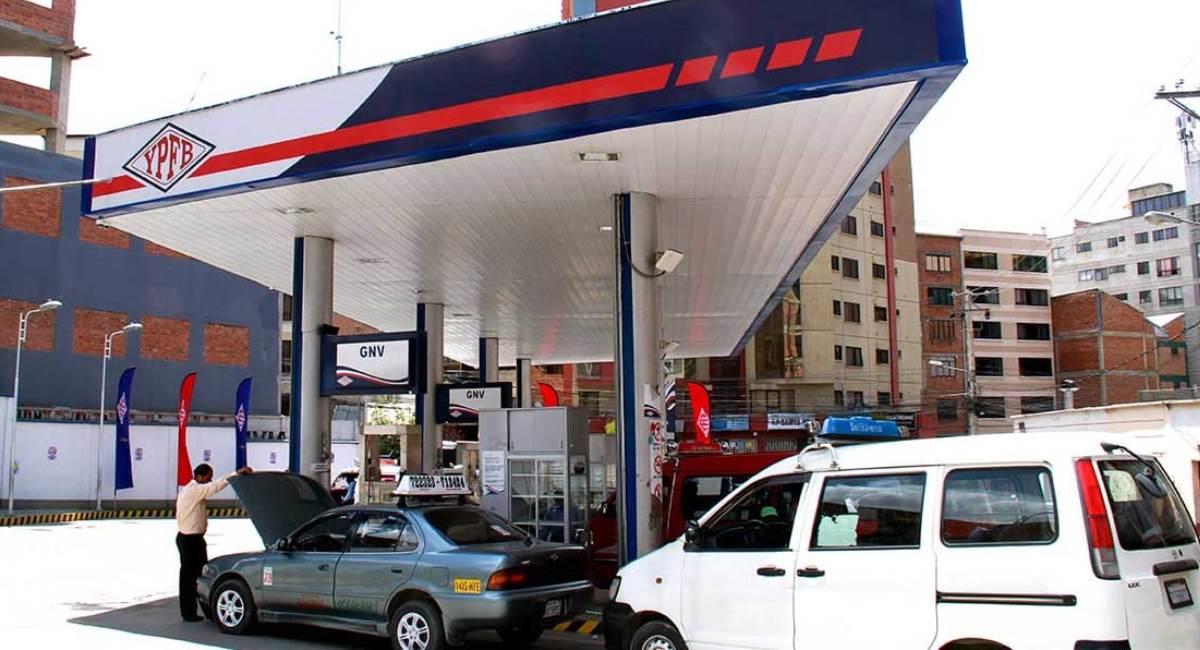Fuel subsidies make the Bolivian government proud, but according to experts, they represent an unsustainable expense and are related to smuggling, corruption, and inefficient energy use.
For more than 15 years, Bolivians have had one of the lowest fuel prices in the region. In the country administered by President Luis Arce, a liter of special gasoline currently costs BOB 3.74 (US$0.54) and diesel BOB 3.72.
A cubic meter of natural gas (NGV) costs BOB 1.66. A liquefied petroleum gas (LPG) cylinder costs BOB 22.5, and the population spends between BOB 10 and BOB 12 on domestic gas.

According to figures from the National Statistics Institute (INE), fuel imports in Bolivia grew 143% in the first six months of this year compared to the same period in 2021.
The external purchase of gasoline and diesel added up to US$1.8 billion as of June 2022. While in 2021, in the same period, US$729 million was spent.
According to the Ministry of Economy, keeping prices “frozen” is a state policy within the Productive Social Community Economic Model framework. It reduces the risk of a wave of inflation since the energy sector is the engine of any development activity.
The Arce administration considers that “subsidizing the price of fuels for their commercialization in the domestic market is the policy with the greatest positive impact for Bolivian families”.
WHAT ARE THE CONSEQUENCES OF THESE SUBSIDIES?
According to a study published in May by ESD, the discretionary nature of a subsidy by public policy makers generates a short-term benefit for the poorest segments of society, and the negative consequences of such subsidies on the fiscal deficit, investment, economic growth, and environmental impacts, generate that the discussion on the presence, financing, and impacts of energy price subsidies is not minor.
Authors Van Beers & Strand study the relationship between fuel price subsidies and political and economic variables. They indicate that more corrupt societies tend to have higher subsidies, and more democratic political systems have higher prices. When political power is concentrated among a few people, subsidies tend to increase.
According to other studies such as El-Katiri & Fattouh (2015), fuel price distortion leads to little effort in environmental conservation, rentier behaviors, smuggling, adulteration, and resale in the black market.
It is proven in Bolivia, where there is one of the lowest diesel prices in the world: the third most accessible in Latin America and the 16th cheapest in the world. It has given rise to a diesel smuggling market from Bolivia to Brazil, a neighboring country with the third most expensive diesel in the region.
The same is happening on the border with Argentina and Peru, where fuel smuggling is believed to have increased.
According to the president of the Association of Economists of Tarija, Fernando Romero, the border is very vulnerable, and the increase in prices in neighboring countries will increase fuel smuggling. According to the government, the 34 border fuel stations have been guarded by 600 military troops since April.
The Minister of Defense, Edmundo Novillo, acknowledged the problem and said that “as a country, as a State, there is an urgent need to prevent the smuggling of our products such as gasoline and diesel abroad, that is, to our neighboring countries”.
But this is not a new problem. Since 2018 the Bolivian army has been leading the fight against fuel smuggling in the so-called “Sovereignty Plan”.
According to a study done in Saudi Arabia by Alduyan & Gasim published in 2021, subsidies can significantly increase consumption or demand for energy and incentivize inefficient energy use.
It also promotes low government investment in energy efficiency. Another problem highlighted by experts is that a subsidy seeks to help the poorest families, but in reality, it is upper-middle-income families who benefit from most of these subsidies.
Let us remember that Bolivia is a gas producer but not an oil producer. That is why it must import diesel and other fuels. The government of Evo Morales tried unsuccessfully to lift the subsidies in 2010.
This measure caused a severe crisis and social conflict known as the gasolinazo. Morales took a step back and maintained the prices after the population uprising.
Among the last measures of the ruling party led until today by Morales, on January 19, 2022, Supreme Decree (DS) 4661 was launched.
This decree establishes the reduction of tariffs to 0% for the import of crude oil and allows Yacimientos Petrolíferos Fiscales Bolivianos (YPFB) to define the volumes of crude oil to be imported based on the needs of the domestic market and the processing capacity of the refineries.
In this way, the government considers that the fuel supply is guaranteed for all the country’s productive sectors.
WHAT IS HAPPENING AT THE REGIONAL LEVEL?
The war between Russia and Ukraine caused a significant price increase throughout Latin America, but not Bolivia.
“Contrary to what happened in these neighboring countries, Bolivia kept fuel prices fixed, within the framework of a policy instructed by President Luis Arce to provide certainty and tranquility and move towards the economic reactivation of the Bolivian people,” highlights the Ministry of Hydrocarbons and Energies.
In Argentina, diesel increased by 54%; in Brazil, it almost doubled its cost; in Chile, it increased by 79%; and in Peru, it increased by 95%. As for special gasoline, in Argentina, it rose by 59%, in Brazil and Chile by more than 100%, and in Peru by 98%.
It is well known that the highest prices in the region are in Chile and Brazil, while the lowest are in Bolivia and Argentina. However, Bolivia has one of the highest indicators concerning gasoline prices as a monthly per capita GDP percentage.
According to the ESD study, “in absolute terms, the price is low, but in relative terms, it ends up being high. On the other hand, despite having high prices, Chile has the lowest indicator because the size of its GDP is relatively larger than the rest of the countries”.
With information from Bloomberg

